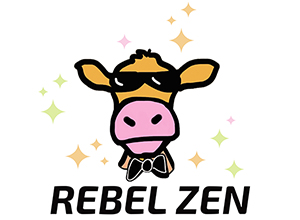When it comes to creativity I often think about how the usual dream creatives have about making art is to use a traditional French food approach vs. a machine-driven approach at factory scale. What I mean by this is that we think of artists as all working like a trained master of Charcuterie food products: taking time and care with each recipe to create something timeless and, as the trend goes, artisanal.
However, if you look closely at the arts, you will see that this is not the whole case, in fact many creatives benefit from what business-heads call “leverage”. This does not, in this context, mean debt. It means getting more output out of less input. For example, you can “chip away at it”, like an old fashioned craftsman, or you can shove entire tree branches into a wood chipper to get a result, at scale, fast. When it comes to creativity, the go-slow method is romantic and thus generally admired, and yet the real money has always been in creating a factory to pump out the art at scale.
The question here is: which way of working is right for you? And are the two mutually exclusive? Let’s have a closer look at mechanisation (wood chippers) vs. artisans (charcuterie).
The Charcuterie Approach
Firstly, in case you aren’t up on it, charcuterie is the art of making traditional French cured meat products. Examples of the Charcuterie Approach are everywhere. Musicians, at least those who don’t have a big enough following to sell recordings at scale, use the artisanal approach to earn money by doing one-off shows. These need rehearsing for and require the personal attendance and performance of the musicians involved. There is nothing factory-like about this approach, at least not as it applies to most bands; it is pure manual labour, if indeed, that of love.
Painters are another example of the ‘chip away at it’ approach, painting one piece at a time and hoping to sell the actual painting that they have manually laboured away at. If they are successful, they get more cash per piece, but they can still only sell the original once. After that they have to make another one.
The Wood Chipper Technique
For an example of the Wood Chipper Technique, let’s look at Andy Warhol: he set up his “Factory” studios wherein he made plenty of bespoke pieces to be sure, but he also had low-skilled workers creating pieces “by” Andy Warhol with little or no involvement from himself. This was more of a statement on modern society than a truly mass production environment, however it is certainly true that he made some pretty good coin without actually needing to much manual work himself to create the products that he sold. (What he DID do was labour to create the BRAND that he then leveraged.)
The best example of this approach is the creation of packaged media for limitless reproduction and sale. Movies, records and reproductions of artwork in many situations are the perfect example of this. The reason such endeavours make me think of mulchers is because at one end you do have a lot of “manual labour” but the product of this effort can be resold over and over again more or less infinitely. For example, it takes a big team and a lot of hard work to make a movie, but they can then sell screenings of this movie, in the various modes, forever. The makers of Seinfeld famously cashed in big time on the syndication rights to endlessly repeat the episodes, paying the creators a fee each time.
And as I say, this applies to other mediums also. A popular band labours once to create a song, which then earns them money every time it is purchased by a fan, included in a movie soundtrack, played on the radio or used in advertising. An illustrator labours once to create a quirky drawing of a super cute bunny, which can then be resold on birthday cards, wall prints, toys, stickers, clothing, stationery, advertisements … the list goes on.
Have Your Creative Cake And Eat It Too
While a “factory” mentality is not very romantic nor popular as an idea, compared to the much vaunted and valued concept of being “bespoke”, in the end I think getting leverage makes more sense for an artist or creative of any type. By looking at it as a woodchipper rather than a widget factory, you get a better sense of how you still get to do what you love, but once it’s made, you pop your creation into a whizz bang machine that then sprays reproductions of your art everywhere, building your brand and hopefully, your bank balance in the process.
Let’s face it, even a traditional French master of Charcuterie probably uses a sausage machine to speed up production once he has perfected the ultimate saucisson recipe!
